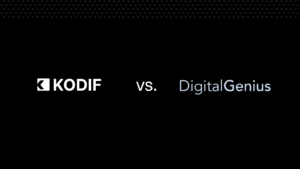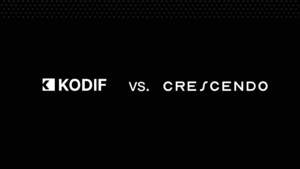The queue is overflowing. Macros are duct-taped together. Agents are juggling subscriptions, cancellations, and complaints while Slack is on fire with “urgent” customer escalations.
In other words: welcome to chaos.
Every ecommerce brand hits this point eventually. Growth is exciting until support cracks under the weight of it. The natural reaction is to patch the holes.
Throw in a bot here, an outsourced team there, a new macro or two. But those “quick fixes” rarely scale. They create the dreaded Frankenstein stack: dozens of disconnected tools, partial automations, and customers who still don’t get their problem solved.
The promise of support automation is to cut through that chaos, but only if it’s designed to scale. And scaling isn’t about adding more bots. It’s about building a foundation that grows stronger the bigger you get.
Here’s how to get from chaos to clarity.
Step 1: Map the chaos before you tame it
Automation without strategy just accelerates the mess. Before you scale anything, you need a clear picture of your customer journey.
Start by asking:
- Where does volume spike? (Shipping updates, promo periods, subscriptions, cancellations)
- Which tasks are repetitive but predictable?
- Where do customers most often get stuck and escalate?
- Which conversations actually require human empathy or judgment?
This audit becomes your blueprint. Instead of throwing AI at every touchpoint, you can target the workflows where automation delivers the biggest impact.
Example: If 35% of your tickets are “Where’s my order?” inquiries, solve that first. If a large percentage of your churn is tied to subscription cancellations, prioritize a save-the-sale workflow.
Step 2: Automate actions, not just answers
Too many companies confuse “chatbots” with “automation.” A bot that spits out FAQs is not automation, it’s just a prettier help center.
Scalable automation means your AI can do things, not just talk about them.
- Skip or pause a subscription
- Process a refund
- Change an address mid-shipment
- Handle a thawed-food complaint or issue a replacement order
- Recommend a bundle or apply a promo code
This is the difference between deflection and resolution. Customers don’t want to be redirected; they want their problem solved.
KODIF in action: Brands like JustFoodForDogs use KODIF to automate feeding plan changes, thawed food replacements, and subscription skips: all end-to-end. The outcome isn’t just fewer tickets. It’s happier customers and real revenue retained.
Step 3: Build for the peaks, not the averages
Support doesn’t break on a random Tuesday. It breaks on Black Friday.
Peak season stress tests your systems in ways normal weeks don’t. Ticket volume triples. Agents are stretched thin. Promotions create edge cases your macros never anticipated.
If your automation can’t handle the surge, it’s not scalable. Building for scale means designing for the peaks:
- Stress-testing workflows before big sales
- Setting escalation logic for when AI gets stuck
- Prioritizing VIP customers during high volume
- Ensuring automation can handle both simple requests and complex, high-frequency workflows
The key is resilience. A system that crumbles under pressure isn’t automation, it’s false security.
Step 4: Keep humans in the loop
Automation doesn’t replace humans. It makes them more effective.
The goal isn’t zero humans. The goal is humans focusing only on the conversations where they actually matter.
That means:
- Automation takes care of the routine, repeatable tasks.
- AI hands off to humans with full context (no more “Can you repeat your order number?”).
- Agents spend time on empathy-heavy, high-value conversations: VIP saves, escalations, or moments of brand loyalty.
This balance is how you scale without burning out your team. Agents stop feeling like robots themselves, and customers feel cared for.
Step 5: Experiment, measure, repeat
Here’s the most overlooked truth: automation is not “set it and forget it.”
Support leaders who treat automation like a one-and-done project end up right back in chaos.
Scaling automation means constant experimentation:
- A/B test workflows. Does offering a skip save more subscribers than offering a discount?
- Track completion, not just deflection. Did the workflow actually resolve the issue?
- Measure revenue and retention impact. Are automations saving subs, lifting AOV, or recovering carts?
- Continuously optimize. Double down on what works, fix what doesn’t.
From chaos to clarity
Support automation that scales isn’t about how many bots you deploy. It’s about how well those automations resolve issues, survive peak season, empower humans, and improve over time.
Done wrong, automation just adds another layer of chaos. Done right, it transforms your support org into something consistent, resilient, and revenue-driving.
The result is less firefighting. More clarity. And customer experiences that actually set your brand apart.
At KODIF, that’s exactly what we’re building: automation that grows with you, not against you.









